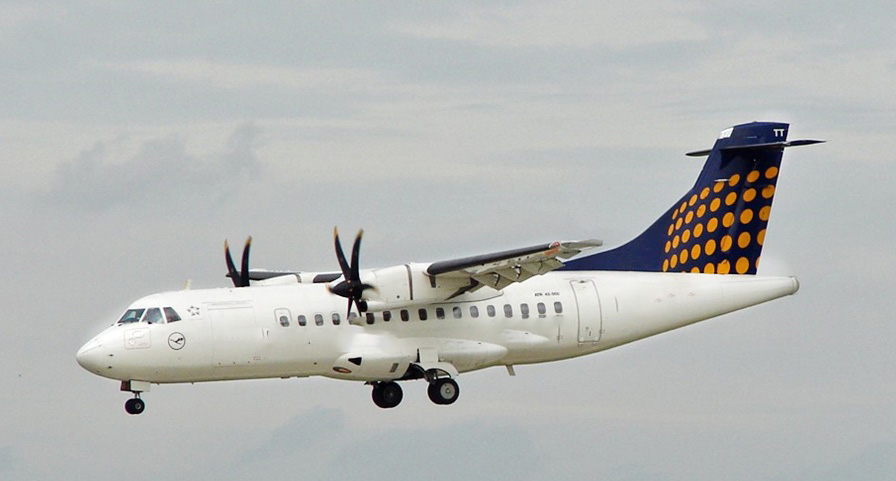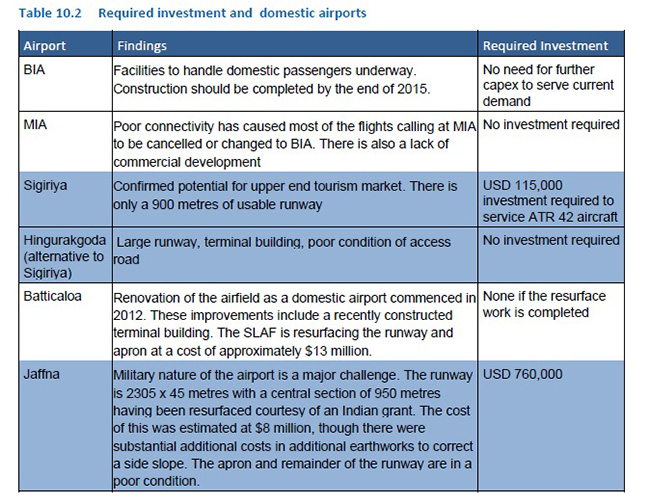Features
Hingurakgoda Airport

by Guwan Seeya
In the early nineties, the Hingurakgoda (Mineriya) Airport was nominated to be upgraded as an alternative airport to Bandaranaike International Airport (BIA) ‘out of the blue’ with financial aid from Australia. During this time at a regional conference of the International Federation of Air Traffic Controller Associations (IFATCA) held in Sri Lanka, a member of the Air Line Pilots’ Guild of Sri Lanka commented about the ‘end users’ not being consulted on matters such as these (Meaning the Airline Pilots). Then another commented saying that the real end users were the passengers. To that the Chairman of that segment of the conference replied without hesitation that the passengers were the ‘victims’. The project eventually was shelved for unknown reasons.
Now again the Government of Sri Lanka is keen on making Hingurakgoda an International Airport by investing Rupees17 Billion. If at all, it is felt that it should be developed as a ‘Domestic’ Airport only. That is as recommended by a World Bank (WB) report titled ‘Options Study for Private Sector Participation in the Development of the Domestic Airport Sector in Sri Lanka’ promulgated in 2016. In fact, the WB consultants had shortlisted a maximum of five airports as potential Domestic Airports where facilities could be developed. They being Bandaranaike International Airport (BIA), Mahinda Rajapaksa International Airport (MRIA), Sigiriya Airport or Hingurakgoda Airport, Batticoloa International Airport and Jaffna International Airport.
I quote from the report.
“As a maximum of five airports must be shortlisted for consideration in the later stages of this study, it is proposed that the five highest scoring existing airports above are shortlisted over the concept of development of a new airport at Digana (Kandy). This is for a number of reasons including the relatively low aviation demand across the forecast period and the need to build a new airport instead of simply to renovate/redevelop an existing air field as for the others shortlisted. (It must be stated here that even Lord Mountbatten didn’t fly to Kandy or Peradeniya, but flew to Mawathagama Airport, Kurunegala and then went by road.)
Key conclusions from the above:
It was concluded that Jaffna and Sigiriya would not provide enough demand in the short-term (2020) to provide what the airlines would consider a minimum schedule (five flights per week of a forty-two seat ATR42 with a 68% load factor).
Jaffna has more perceived upside in the
long term and was therefore included in the shortlist of five airports for further consideration.
Infrastructure Investment Needs
The Consultant undertook site visits to each of the shortlisted airports to assess their infrastructure requirements to facilitate domestic services. Aside from a small amount of investment required at Sigiriya and Jaffna, all airports have the necessary hard infrastructure to cope with regular ATR 42 type services. Most of the airports do not have well developed commercial facilities but these are not considered required infrastructure. However, the lack of commercial facilities will impact the revenue estimates.” (See Table)
As can be seen from the Table 10.2,

* BIA No need for further facilities. A Terminal to handle domestic passengers underway.
Current construction should be completed by the end of 2015
* MI(R)A No investment required
Poor connectivity has caused most of the flights calling at MIRA to be cancelled or changed to BIA. There is also a lack of commercial development
(3a) Sigiriya
USD 115,000
Confirmed potential for upper end tourism market. There is an
Investment required as only 900 metres of usable runway are available.
(3b) Hingurakgoda
No investment required.
Large runway, terminal building, poor condition of access
(when compared with Sigiriya)
* Batticaloa Investment none, if resurfaced
Renovation of the airfield as a domestic airport commenced work is completed in 2012. These improvements include a recently constructed terminal building. The SLAF is resurfacing the runway and apron at a cost of approximately $13 million.
* Jaffna USD 760,000
Military nature of the airport is a major challenge. The runway
is 2305 x 45 metres (7145ft X 140 ft) with a central section of 950 metres (2945ft) having been resurfaced courtesy of an Indian grant. The cost of this was estimated at $8 million, though there were substantial additional costs in additional earthworks to correct a side slope. The apron and remainder of the runway are in a poor condition.
The site visits found that a significant amount of investment is not required in order to service the unconstrained demand forecasts. If higher demand and therefore larger planes were forecast, then the investment required would be substantial, except at BIA and MRIA that are equipped to handle such craft. The use of small aircraft means that only minor upgrades are required in Sigiriya and Jaffna.”
Readers, please note that the above refers to domestic Airports and not International.
Please also note that although the Colombo Airport Ratmalana has not been mentioned anywhere in the said WB report, not even as a domestic airport. However, it has now been classified by the Government as an ‘International Airport’ along with BIA (to the West), MRIA (to the South), Batticaloa International (to the East) and Jaffna International Airport (to the North).
The question is, in the light of an expected second wave of a Covid 19 like pandemic, do we need so many points of entry and exit in a small Island like ours? Are we not courting trouble?
Hingurakgoda (Mineriya) was established during WWII in 1942 to accommodate RAF Hawker Hurricanes, Supermarine Spitfires Fighter Planes and occasional bomber aircraft as it had a 7200 ft Runway. Today, a modern medium size jet like a B737 Max 8 will weigh about 82,000kg(180,400 lbs) or an Airbus A320 will weigh about 75,000kg (165,000lbs), A fully loaded WWII Consolidated B 34 Liberator would have weighed only about 25,000kg (55,000 lbs), (Less than half the weight of a modern day aircraft).
The ‘modus operandi’ at the tail end of WWII, was for these Civil Liberators operating out of Ceylon to Australia, to refuel up to a lower Maximum allowed Take-off weight with passengers out of the short runway in Ratmalana and then fly inland to Hingurakgoda which had a longer runway and refuel there while the passengers had lunch. We also know from reports that they had to over-load these combined BOAC and Qantas operated flights by almost 10,000 lbs over and above the authorised maximum take-off weight so that they could have the capacity to fly non-stop across the Indian Ocean to Learmonth airport, built exclusively to shorten the length of these long range flights and located in Western Australia. They preferred to fly across the ocean in the evening and night as the Navigator could then use the star shots (Astro-Navigation) to establish their position (There was no GPS in those days). In Civil Aviation, each organisation was left to its own devices that worked for them. (Law of the jungle?)
In 1951, the International Civil Aviation Organisation (ICAO) promulgated the Annex 14 to the Chicago Convention of 1944 titled ‘Standards and Aerodrome Certification’
There, it is stated that a runway at an airport not only has to be long enough but also strong enough to accommodate certain types of aircraft that will carry an Aircraft Classification Number (ACN). All international airports in turn should carry a Pavement Classification Number (PCN). To be officially permitted to operate at an International airport the ACN cannot exceed the PCN.
The chances of the aircraft damaging the runway surface is great. It happened at the Ratmalana Airport in the late fifties when a heavy Bristol Britannia landed and tore up the top surface of the Runway on the landing-roll. Thus, rendering the runway useless for a while.
It could happen in Hingurakgoda too as there is no PCN declared. Even after renovation it is believed that the airport will be able to accommodate only ‘light to medium’ weight aircraft like Cessna 172,’s, Cessna 208’s, De Haviland Dash 8’s and certainly not Airbus A320 and Boeing B737 aircraft.
The Rs. 17 Billion allocated for Hingurakgoda could be better spent. The existing International airports except BIA and MRIA are lacking vital radio- navigational aids to be used during low visibility created by rain, fog, mist, smoke and haze. (Remember the SLAF crash at Hokandara?) There are higher aviation related priorities that the Government should concentrate on such as an Instrument Landing System (ILS) and a VHF Omni Radio-range with Distance Measuring Equipment (VOR/ DME) for Colombo International Airport Ratmalana where all civil pilot training takes place.
An ILS and VOR/ DME for Jaffna International Airport. An ILS and VOR/ DME for Batticaloa.
Above all, BIA should establish a parallel second runway, north of the existing runway to accommodate anticipated Civil Air traffic increase. SLAF Katunayake personnel and aircraft squadrons should be transferred out to other SLAF bases including Hingurakgoda for the jet fighters.
The President should be fully implemented National Civil Aviation Policy 2017 passed by Parliament, ASAP.